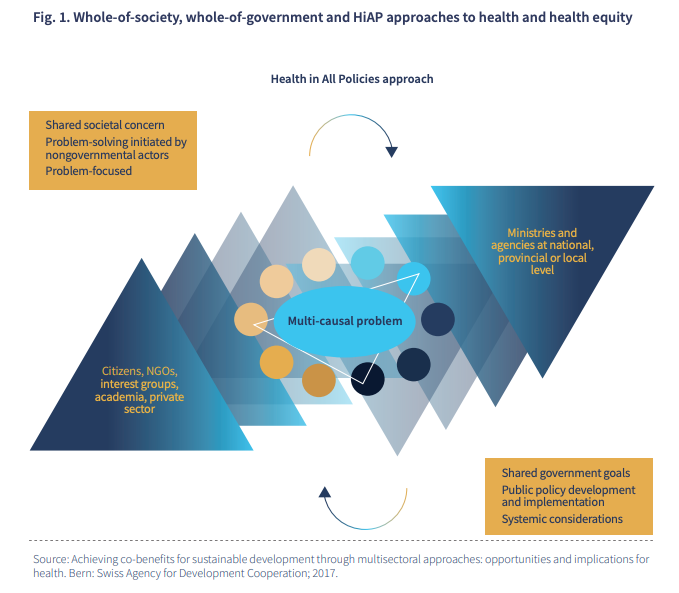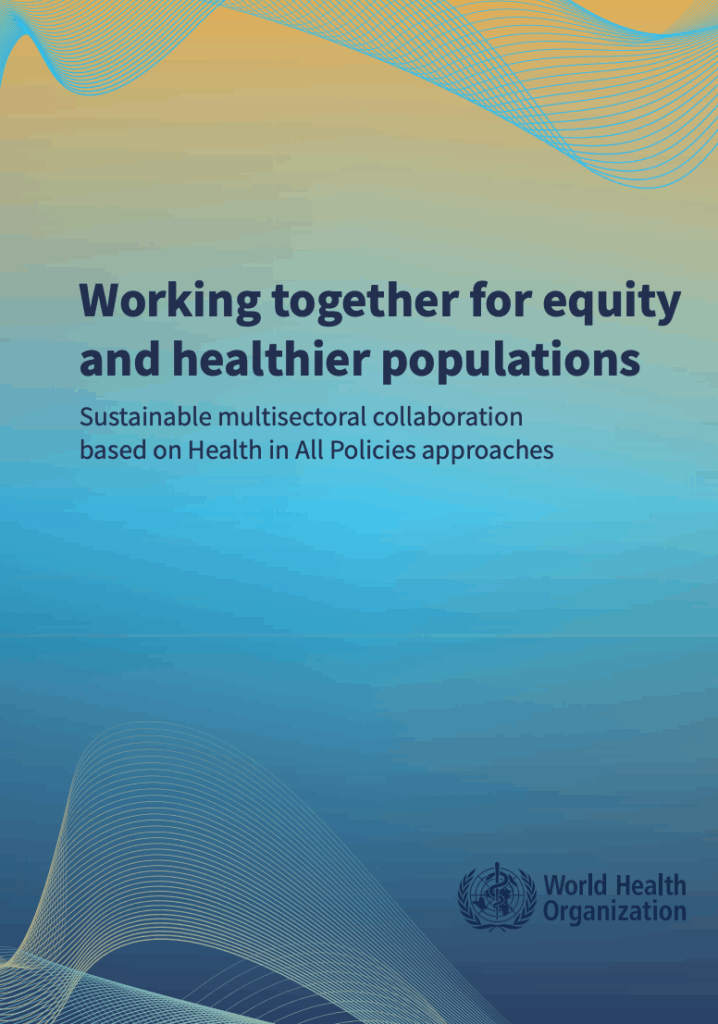About the Global Network for Health in All Policies (GNHIAP)c
The Global Network for Health in All Policies (GNHiAP) is a country-led initiative, which mission is to work with various stakeholders to address the determinants of health, by strengthening the Health in All Policies (HiAP) approach, with an aim to support the implementation of the Sustainable Development Goals and Universal Health Coverage.
The GNHiAP was launched by the governments of Sudan, Finland and Thailand, the Province of Québec, and the State of South Australia during the 70th World Health Assembly in May 2017.
Julian Fisher, Director of Zero Water Day Partnership is a member of thew GNHIAP Executive Committee.
A key aspect of Julian work on the committee is contributing to the development of a series of factsheets and the nexus between the social determinants of health, health in all policies and health in all polices.
Julian is co-editor of the WHO publication ‘Integrating the social determinants of health into health workforce education and training‘ and co-author of the paper ‘Planetary health benefits from strengthening health workforce education on the social determinants of health‘.

WHO 4 Pillars Model
.A HiAP approach provides a framing to help public agencies promote health and address SDH, equity and well-being in government decision-making. The new HiAP model formalizes a set of operational functions and capacities discussed in existing WHO guidance and common to HiAP case studies as shared by these countries.
The three main components of the new model – arches, pillars and foundations. A fourth component – outcomes – is not shown in the figure but is referred to below. These components summarize the core determinants, challenges, organizational values and functions (or capacities) needed to operationalize a HiAP approach and are elaborated below.


Working together for equity and healthier populations: sustainable multisectoral collaboration based on Health in All Policies approaches. Geneva: World Health Organization; 2023. Licence: CC BY-NC-SA 3.0 IGO.

At the centre of the model are the four pillars that focus on important functions and capacities needed to use a collaborative HiAP approach. Many of these functions are relevant to sustaining multisectoral collaboration, regardless of the issue of focus. Governance, leadership, working methods (ways of working) and resources are at the heart of the new model. The exact form of the HiAP model in any country depends on the context and levels at which collaborative action is operationalized – local, subnational, national or all. The new model does not provide a set structure but proposes a common framework for understanding the practical activities needed, recognizing that this approach may require several years to achieve wide-ranging influence and impact.


